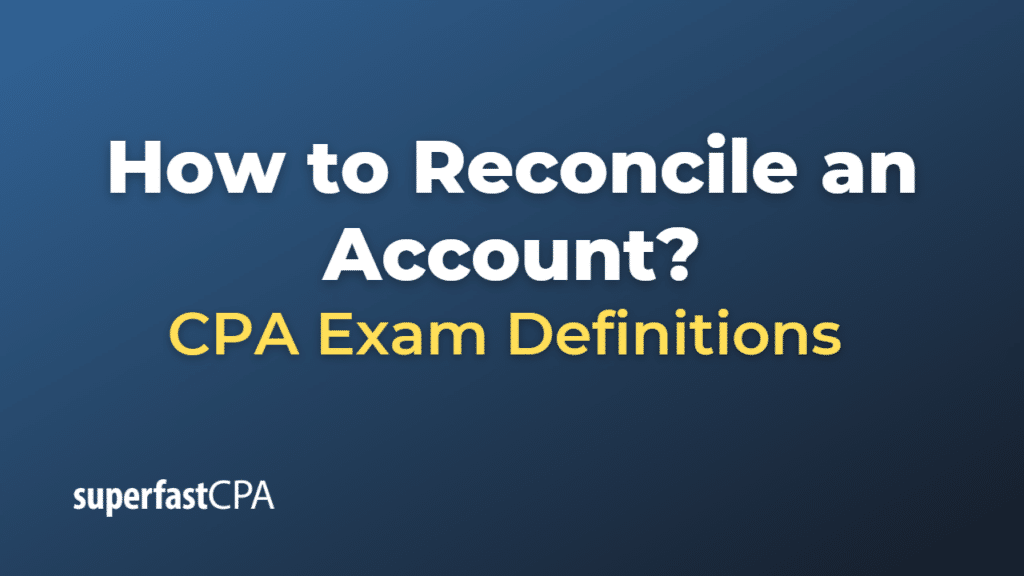How to Reconcile an Account
Reconciling an account generally means comparing two sets of records to ensure they are in agreement. It helps to identify any discrepancies, errors, or fraud. Here’s a basic step-by-step guide on how to reconcile any account:
- Gather the Documents: Gather all necessary documents, including account statements and your own internal records for the period you’re reconciling. For example, if you’re reconciling a bank account, you would need the bank statement and your cash ledger or accounting software records for the same period.
- Review Transactions: Compare the transactions listed on your account statement with those in your internal records. For each transaction on your statement, there should be a corresponding entry in your records, and vice versa.
- Identify Discrepancies: Look for any discrepancies between the two sets of records. This might include transactions that appear in one set of records but not the other, transactions with different amounts, or transactions recorded on different dates.
- Investigate Discrepancies: For any discrepancies identified, investigate and understand the reasons behind them. This might involve checking original transaction documents, contacting the bank or other parties involved, or checking for data entry errors in your records.
- Adjust Your Records: Based on your investigation, make necessary adjustments to your records to correct any errors or omissions. For example, you might need to record missing transactions, correct amounts, or adjust transaction dates.
- Verify the Balances: After making all adjustments, the adjusted balance in your records should match the balance on your account statement. If they don’t match, recheck your work and continue investigating any remaining discrepancies.
- Document the Reconciliation: Document your reconciliation process, including any discrepancies found, the investigation results, and the adjustments made. This is an important step for maintaining accurate records, ensuring financial control, and facilitating future audits or reviews.
Remember, the goal of reconciliation is to ensure that your records accurately reflect all transactions and balances. Regular reconciliation helps to catch errors, discrepancies, or fraud early, and can contribute to more accurate financial reporting and better financial management.
Example of How to Reconcile an Account
Let’s say you’re reconciling your company’s bank account for June 2023. As of the end of June, your company’s cash ledger shows an ending balance of $7,000. The bank statement for the same period shows an ending balance of $6,500.
- Review Transactions: You begin by comparing all the transactions listed in your cash ledger against those on the bank statement.
- Identify Discrepancies: You notice a check for $500 issued at the end of June that is listed in your cash ledger but not on the bank statement. This is likely because the check has not yet been cashed by the recipient and therefore has not been deducted from your bank account yet.
- Investigate Discrepancies: You confirm that this is an outstanding check that hasn’t cleared yet.
- Adjust Your Records: Since the check hasn’t cleared the bank yet, it’s considered an outstanding check and no adjustment is needed to the cash ledger. However, it will be important to note this outstanding check when you reconcile next month’s statement.
- Verify the Balances: After considering the outstanding check, the adjusted balance in your ledger is $6,500 ($7,000 from the ledger minus the $500 outstanding check), which matches the bank statement balance of $6,500.
- Document the Reconciliation: Document the reconciliation, noting the outstanding check and that after considering it, the cash ledger balance matches the bank statement balance.
In this case, the reconciliation process helped to explain the difference between the cash ledger and the bank statement, and ensures that the company’s cash records accurately reflect the company’s true cash balance.













